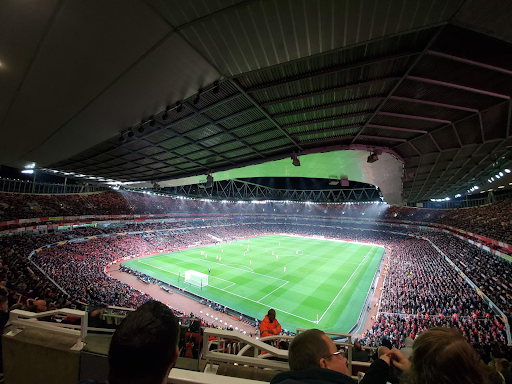From Oil to Glory: Can Gulf Football Leagues Challenge Europe’s Dominance?
For years, European football was without question the best. Europe had it all: the finest players, the biggest leagues, and extensively followed matches. But now, the Gulf regions are changing everything. With their billions spent, world-renowned players are coming, and their mindset is broader than just territorial control. Gulf leagues have shifted from developing to competing. Could they, in fact, go up against Europe’s football empire? Well, let's find out.
Gulf Leagues on the Rise
Football is no longer just a national competition in the Gulf. It's become a global venture. The Saudi Pro League, Qatar Stars League, and UAE’s Arabian Gulf League have become elite within no time, accepting sponsorships from several corporations along with world-class coaches and players. And fans from all over the world have become more active in watching matches from the Gulf regions using the
MelBet تحميل application. It provides more than 1,200 football events for prediction on a regular basis. Some of them are even available for live broadcasting and live betting!
But why is it so? What is the reason for such popularity? It's simple. In the last five years, more than $2 billion has been poured into the football infrastructure of the Gulf nations. Sales of tickets and rights to broadcast the matches are booming, and the stadiums are undergoing construction. Football clubs based in Saudi Arabia, the UAE, and Qatar are competing for the first time as equals and are raising players' prices, changing the entire transfer market.

Big-Name Transfers to the Middle East
Everything changed when international celebrities began relocating to the Gulf. It was no longer just about aging players. Saudi, Qatari, and Emirate clubs were signing top players at the height of their careers. The biggest transfers follow clear patterns:
• Unprecedented Gulf Pays: Arabian leagues currently offer the most extravagant salaries in soccer history for new signings, even more than the Premier League.
• Astronomical Pre-Contract Payments: Star athletes receive massive checks long before they kick a ball.
• Expanded Marketing Agreements: Sponsorship contracts are common among players joining Gulf clubs, which boost their earnings beyond football.
• Reduced Control Over Club-Related Decisions: Unlike in Europe, some Gulf players hold a degree of power over who gets signed or which coaches get appointed.
These developments have shattered the balance of the football market, with European clubs having no choice but to compete for billion-dollar contracts issued by Gulf nations.
Saudi Pro League’s Rapid Growth
Saudi Arabia has bet big on football by investing billions in the sport to attempt to make the Saudi Pro League a top international contender. They have stated that the league will compete with Europe and the U.S. in football by bringing in high-profile players like Cristiano Ronaldo and Lionel Messi.
Saudi Arabia's focus is on bringing in private investors in addition to the funding already provided by the government. They also plan on attracting stars from different countries in order to greatly bolster their national football team. Alongside these moves, they have bold goals of making the league one of the top five internationally recognized leagues in under a decade.
Qatar & UAE’s Football Ambitions
Instead of simply purchasing players, Qatar and the UAE have taken a slightly novel approach by attempting to build football empires. The UAE-backed Manchester City has transformed into a giant of the Premier League, while Qatar’s investments in PSG have granted them control over one of the biggest clubs in the world.
Qatar and the UAE are focused on expanding infrastructure, improving youth development programs, and enhancing sponsorship deals. These countries are making their leagues more appealing to foreign athletes and investors, which will help in the long run. Their aim is not just to compete. Rather, it is to become the model of football supremacy that combines Middle Eastern and European styles.
European Stars Moving to the Gulf
The migration of elite players to Gulf leagues is putting pressure on European football. These are the reasons:
1. Unequaled Wages: Players are earning up to three or four times more than they would in Europe.
2. Gulf Living Conditions: Zero taxation, top-notch institutions and facilities, and a lavish lifestyle make the Gulf a favorable place.
3. Lower Physical Demand: It is easier on the Gulf players' bodies because the game is slower, more skillful, and less strenuous.
4. Club and National Sponsorship: Gulf league players receive special treatment, including premium housing and sponsorships.
With the ongoing move by more stars to Gulf leagues, it is becoming clear that the Gulf is not only a retirement spot but also a place for genuine football enthusiasm.
Financial Power Behind the Leagues
It's not just about signing players that makes Gulf leagues successful. It's about their financial power. The statistics are jaw-dropping:
| Category |
Investment |
Key Contributors |
Impact |
Projected Growth |
| Player Transfers |
$1.5B+ |
Saudi Arabia, Qatar, UAE |
World-class talent arrives |
Increasing yearly |
| Stadium Development |
$3B+ |
Gulf governments, private investors |
State-of-the-art facilities |
Hosting global events |
| Sponsorship & Broadcasting |
$2B+ |
BeIN Sports, local telecom giants |
International TV deals |
Expanding beyond the region |
| Youth Development |
$500M+ |
National sports federations |
Building future stars |
Long-term sustainability |
| Marketing & Fan Engagement |
$1B+ |
Global brands, tourism boards |
Attracting global audiences |
Creating a worldwide fanbase |
This level of investment has no comparison to other leagues outside Europe, proving that the Gulf isn’t just pouring money. It has a plan to construct a football empire.
Can Gulf Leagues Rival Europe?
The question at hand is not about whether the Gulf leagues can compete. It is whether they can topple the ever-dominating European leagues. The answer relies on these three crucial considerations:
• The first one is consistency. European leagues tend to have structure and history due to their established fanbases, which is something the Gulf leagues need to build over the years.
• The second point is infrequent global exposure. If Gulf clubs manage to attain a position in other international competitions, they will receive global recognition.
• Player retention is the third point. The more high-tier players who choose to stay for longer periods, the more respect the Gulf leagues are given. If these aspects coincide, Europe will have a challenger for the first time in the history of football.

Infrastructure & Fanbase Expansion
It goes further than the players over there. The Gulf region is fostering a unique football society. Fans are increasingly becoming more involved, stadiums are modernizing, and young talent is being developed through academies.
The governments are focused on football tourism, attracting global fans to experience Gulf football. The sales of products are increasing along with the media contracts, academies are succeeding, and there is growth in selling commercial products. These efforts are not merely a trial. It’s a reshaping strategy for the future!
The Future of Football in the Gulf
The Gulf leagues do not intend to engage in lower-division football. They intend to dominate. From boundless financial backing to world-class players and powerful leadership, the region has changed the course of history forever.
Like it or not, Europe, the Gulf, is no longer a football follower but a leader… and the revolution hasn’t even started.

